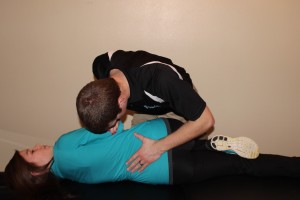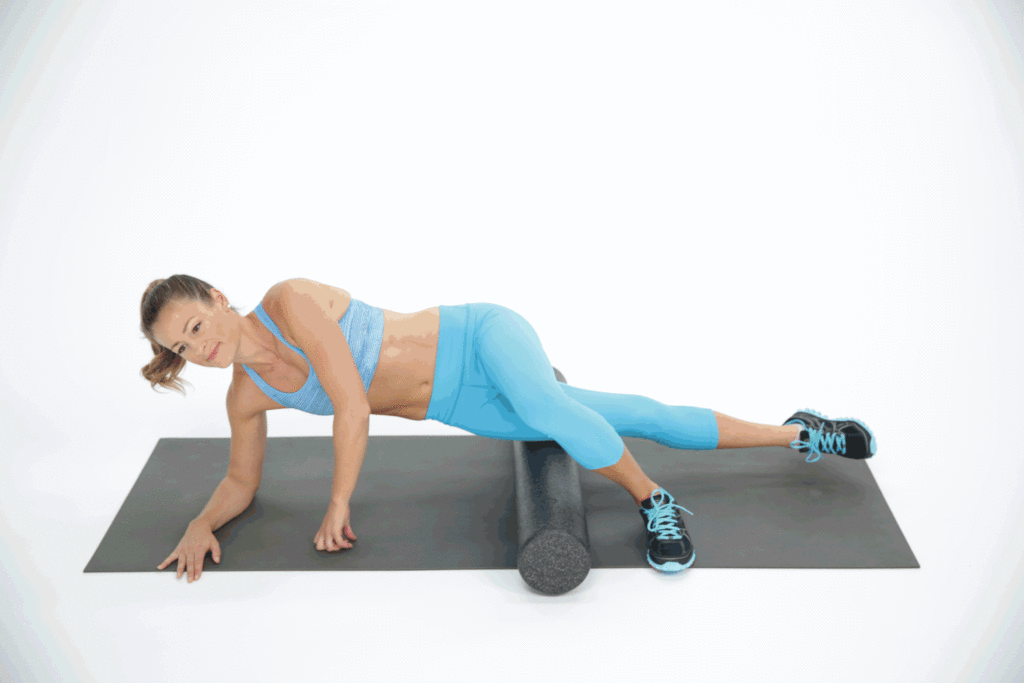The “Bone Out Of Place” Theory Is Outdated, So What Is Happening? (Part 2)

In our last blog post, we discussed the common misconception about the outdated “bone out of place” model. While it was the prevailing thought for the mechanism of injury decades ago, current research has shown otherwise. In addition, chiropractors and physical therapists continue slipping this terminology into countless conversations without so much as a second thought. There is even the historical chiropractic term, “subluxation.” This term was defined as a spinal bone that moved out of position relative to the adjacent vertebrae. “Subluxation” was in vogue for much of the last century. However, research is showing that this is simply not true or accurate. To read the explanation of why that’s not the case, you can read Does Manipulation Move Bones Back “Into Place”?.
Unfortunately, this common misconception can often lead a person to avoid certain movements for fear he or she will throw his or her back, neck, or hip bone out of place. This is termed fear avoidance among musculoskeletal health care professionals. After all, you never know when your back might “go out” on you!
Chiropractors perform joint manipulation, not to put bones “back into place” or correct alignment, but to make sure there is proper range of motion in any joint that is not moving well and may be contributing to your symptoms.
“Bone Out of Place” Model Outdated
If a spinal manipulation was truly enough force to “put a bone back into place,” imagine all the times your bones would be moving out of place throughout the day. That time your four-year old jumped on your back when you bent over to unload groceries. The pounding your feet, knees, hip, and low back take when you go for your morning jog. The jarring of your neck when you bumped your head on the cabinet door your spouse left open. The load on your spine as you performed the squats or deadlifts in your evening workout.
While all of these things can be stressors on your spine, humans are resilient beings with the ability to absorb forces without continuously injuring ourselves or have bones moving into or out of place. Avoiding all of these things out of fear (except the kitchen cabinet, of course), can often mean that a person feels sentenced to a pretty boring and sedentary lifestyle.
Fear Avoidance and Dependency
Many have been told that in order to “correct” this, you need specific hands-on techniques like manipulation to put your back or neck “back in place.” The implication that once the bone is back in place, you function correctly again. However, this mindset can have serious consequences. While most people respond very well to manipulation, the beneficial effects and improved range of motion are often temporary. If a person avoids any activity of life similar to those listed above, plus feels entirely dependent on a chiropractor or physical therapist to put their bones or joints “back in place,” it fosters both fear avoidance and a dependency relationship between patient and doctor.
At Elite Sport & Spine, we don’t believe patients should be dependent on us for their health or function. We want serve as guides to our patients on their health journeys, but not as the source of health. We firmly believe that people should be able to perform basic maintenance on themselves. Regular movement is key to maintaining and improving musculoskeletal health.

Functional Chiropractic Care: An Evidence Based Model
If you come to one of our chiropractic clinics, we are going to apply current research to your treatment plan. Our chiropractors will likely do some type of soft tissue work to help loosen or relax tight and stiff muscles. Then our chiropractors will perform a joint manipulation or adjustment, not to correct a “bone out of place” or fix your alignment, but to make sure you have proper range of motion in any joint that is not moving well and may be contributing to your symptoms. After that, you will almost always be asked to perform a corrective exercise. This exercise is designed to maintain that new level of muscle flexibility and joint movement. We also stress that our soft tissue and manipulation techniques do not offer a permanent solution to pain. We seek to promote safe movements with minimal-to-no pain and progressive tissue loading immediately after these techniques.
Research suggests a window of time exists after joint manipulation with increased proprioception. Proprioception is the positional nerve signals from the joint to the brain (1,2). During this window, a potential exists to make quick changes in the function of muscles and joints. This quick change is precisely the point of performing the corrective exercises after the manipulation.
Combining Exercise and Spinal Manipulation
For those who experience a sensation of imbalance or “locking” on one side of your back, one of my favorite loading strategies is to perform a loaded lunge variation. One example of such an exercise is the Dynamic Neuromuscular Stabilization (DNS) 11-month tripod position.
While the position of the legs may look similar to a muscle energy technique, there are some key differences:
- This variation involves loading the hips, which helps prevent fear of movement.
- Performing it bilaterally helps prevent a fear that moving the wrong way will “throw out the back/hip” again.
- The individual performs it without the help of a chiropractor or physical therapist, promoting self empowerment
I find loading the hips near end range improves and resolves one-sided tightness in both the low back and hips. This seems especially true when a person cannot tolerate something like squats and/or deadlifts. Give it a try and let us know what you think!
Conclusion
If you’re someone who constantly feels the need for frequent chiropractic adjustments, take a deep sigh of relief. Your hips don’t move out of place, and you don’t need a chiropractor to routinely “put them back in.”
If you are dealing with recurring one-sided hip/low-back pain try a different movement like the loaded lunge variation above instead. Most importantly, stop sitting around in fear of “throwing out” your back or neck with the wrong movement. Your bones don’t move out of place. It involves a much more complex interaction between the muscles, joints, and nerves that results in pain. The right movement will help improve symptoms, not make the “mis-alignment” worse. Chiropractors are improving range of motion, reducing pain, and decreasing muscle tension with our treatments, not fixing alignment.
Movement is key to rehab and recovery. Discover what movements correct your injury and relieve your symptoms, and go move!
References
- Yang J, Lee B, Kim C. Changes in proprioception and pain in patients with neck pain after upper thoracic manipulation. J Phys Ther Sci. 2015;27(3):795–798.
- Cleland JA, Childs JD, McRae M, et al. : Immediate effects of thoracic manipulation in patients with neck pain: a randomized clinical trial. Man Ther, 2005, 10: 127–135.
 262-373-9168
262-373-9168




